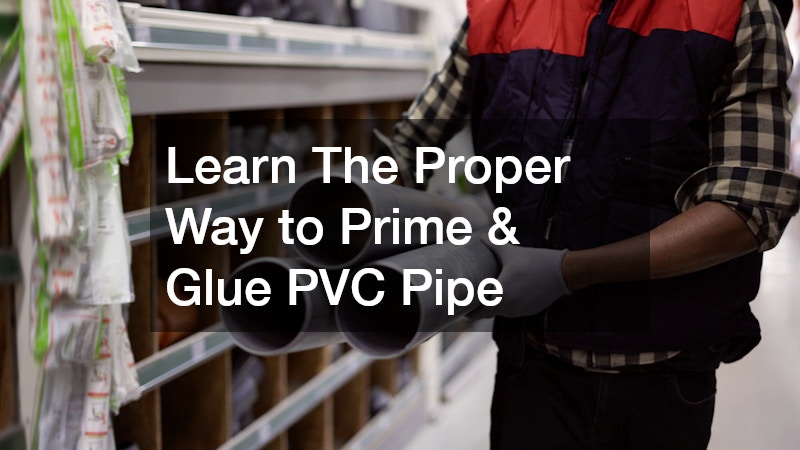
PVC conduit and fittings are integral components in plumbing and electrical systems, offering durability and resistance to environmental elements. Unlike metal conduits, PVC doesn’t corrode, making it an ideal choice for installations exposed to moisture. The versatility of PVC conduit and fittings allows them to accommodate complex piping configurations, ensuring efficient system assembly.
Using PVC conduit and fittings significantly reduces installation time, as they are easier to handle and join. Additionally, their lightweight nature makes transportation and handling more manageable, particularly in large projects. To achieve a robust seal with PVC piping, understanding the process of priming and gluing is crucial, as it ensures longevity and reliability of the installation.
The convenience of PVC extends beyond handling, as it is available in various sizes, making it versatile for different applications. From residential plumbing to industrial setups, PVC conduit and fittings provide a solution that balances strength, flexibility, and ease of installation. Proper preparation, such as priming and gluing the joints, ensures these durable materials perform optimally, resisting leaks and wear over time.
Tools and Materials Needed
For any successful PVC pipe project, having the right tools and materials on hand is imperative. Essential tools for working with PVC include a pipe cutter, sanding paper, primer, and glue. The proper glue, typically PVC cement, is designed to chemically bond the pipes and fittings together, creating a watertight seal.
Primer is equally important, as it cleans and softens the pipe surface to promote a stronger bond. It’s crucial to select a primer and glue suited to the PVC grade and application to ensure compatibility and long-term performance. Additionally, using cutoff tools allows precise cuts, providing a neater fit and reducing unnecessary strain on the joints.
When gathering materials, don’t overlook safety equipment such as gloves and goggles, as the chemicals involved can be hazardous. Accurate measurements, a level, and a measuring tape will also facilitate alignment and installation accuracy. Ensuring all necessary tools and materials are ready before starting the project will lead to a smoother and more efficient process.
Preparing the PVC Pipe
The preparation phase is crucial when working with PVC conduit and fittings, as it sets the foundation for a secure and leak-proof connection. Begin by measuring and marking the desired length, ensuring accuracy to prevent wastage. Carefully cut the PVC pipe with a pipe cutter or hacksaw, maintaining a perpendicular cut to ensure a proper fit.
Next, remove any burrs or shavings from the cut edge with sandpaper or a deburring tool to prevent them from interfering with the joint seal. Clean the connection surfaces with a dry cloth, removing dust or debris that could compromise the primer’s effectiveness. This preparation stage is vital for promoting even glue distribution and adherence during application.
Before priming, double-check all measurements and fittings to ensure they align correctly with the planned installation layout. Proper alignment minimizes stress on joints once the system is operational, contributing to a prolonged service life. Thorough preparation and cleanliness at this stage significantly enhance the reliability and efficiency of the final piping assembly.
Priming the PVC Pipe
Priming is an essential step in the PVC assembly process, promoting a strong connection and maximizing joint durability. Apply the primer generously to both the outside of the pipe and the inside of the fitting using a brush or applicator included in the primer container. The primer cleans and softens the surfaces, preventing gaps and encouraging an even adhesive distribution.
After applying the primer, allow it to dry briefly, as this ensures optimal adhesion of the cement. While some opt to skip priming, considering it unnecessary, doing so can compromise the longevity and integrity of the assembly. A well-primed surface guarantees the pipe and fitting will bond effectively, reducing the risk of leaks and system failures.
It’s important to choose a primer suitable for the type of PVC being used, as different grades may require specific formulations. Performing the priming step in a well-ventilated area is advisable, given the chemical fumes involved. Proper and consistent application of primer is a critical precursor to achieving a professional-quality, long-lasting installation.
Gluing the PVC Pipe
Once the pipe and fittings are primed, the next crucial step is applying PVC cement to create a durable and watertight seal. Spread the cement evenly over the primed surfaces using a brush, ensuring full coverage on both the pipe and fitting. Quickly insert the pipe into the fitting, rotating it a quarter of a turn to evenly spread the cement and eliminate voids.
Hold the joint in place for about 30 seconds to allow the cement to set initially and form a solid bond. This connection relies on the chemical reaction between the PVC and cement, effectively welding the two pieces into a single unified form. Ensuring a tight bond at this stage prevents leaks and minimizes potential issues in the plumbing or electrical system.
Curing time is crucial for the glue to achieve full strength, typically requiring at least 24 hours before pressure testing or use. Once cured, the joint should be checked to ensure no gaps or voids exist that could threaten the system’s integrity. Proper gluing techniques, combined with accurate priming, result in a reliable connection that’s essential for any PVC conduit and fitting installation.
Mastering the proper techniques to prime and glue PVC piping is essential for creating robust, long-lasting installations. By understanding the properties of PVC conduit and fittings, gathering the appropriate materials, and employing careful preparation, you can achieve professional results. Properly primed and glued PVC assemblies offer both the reliability required for essential systems and the ease of installation that DIY enthusiasts appreciate.






